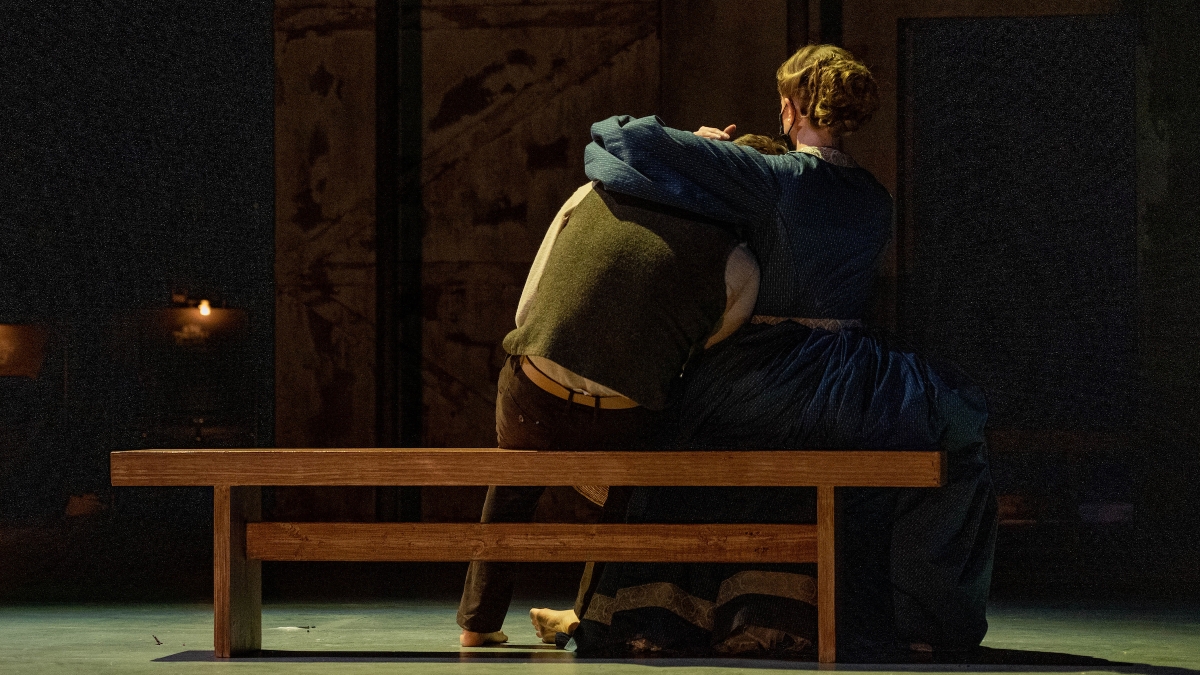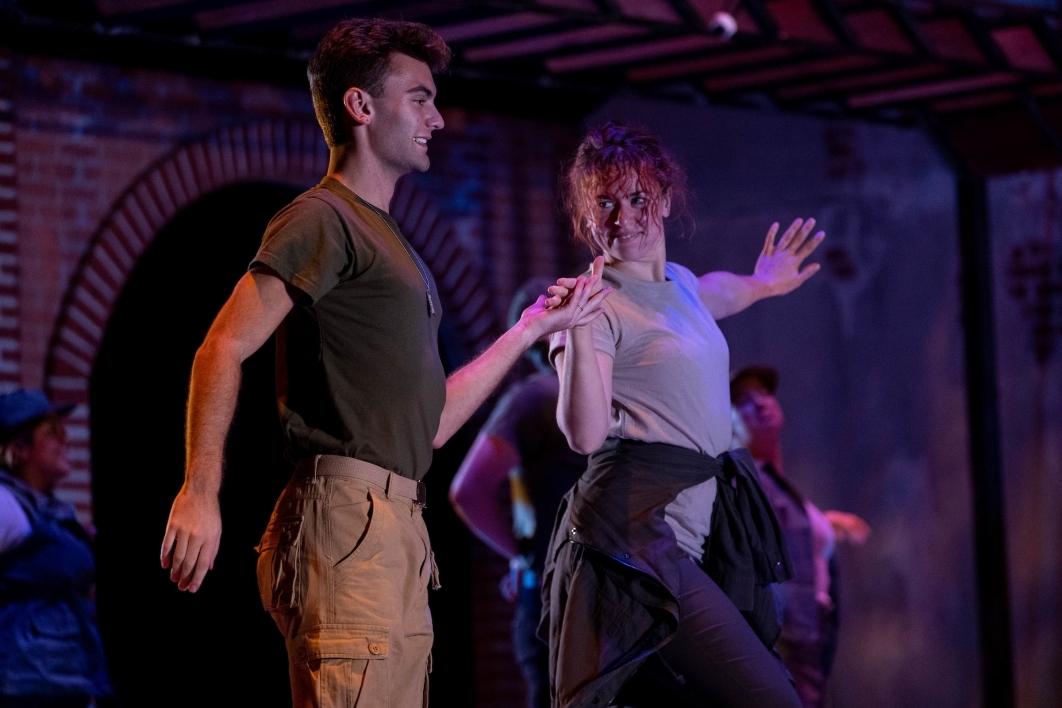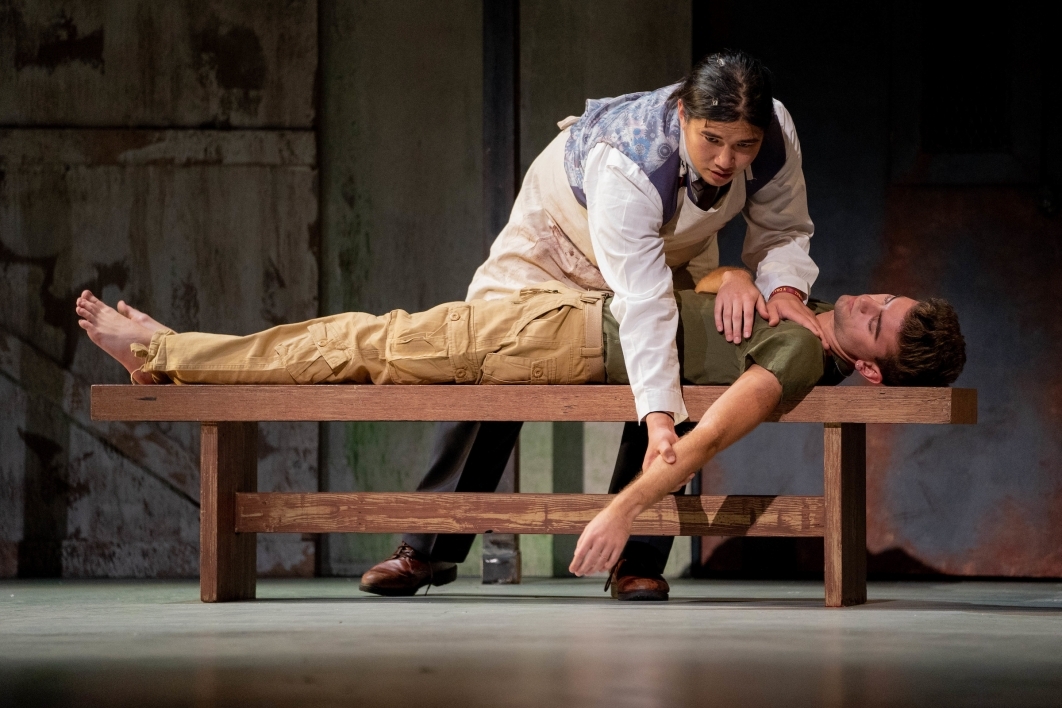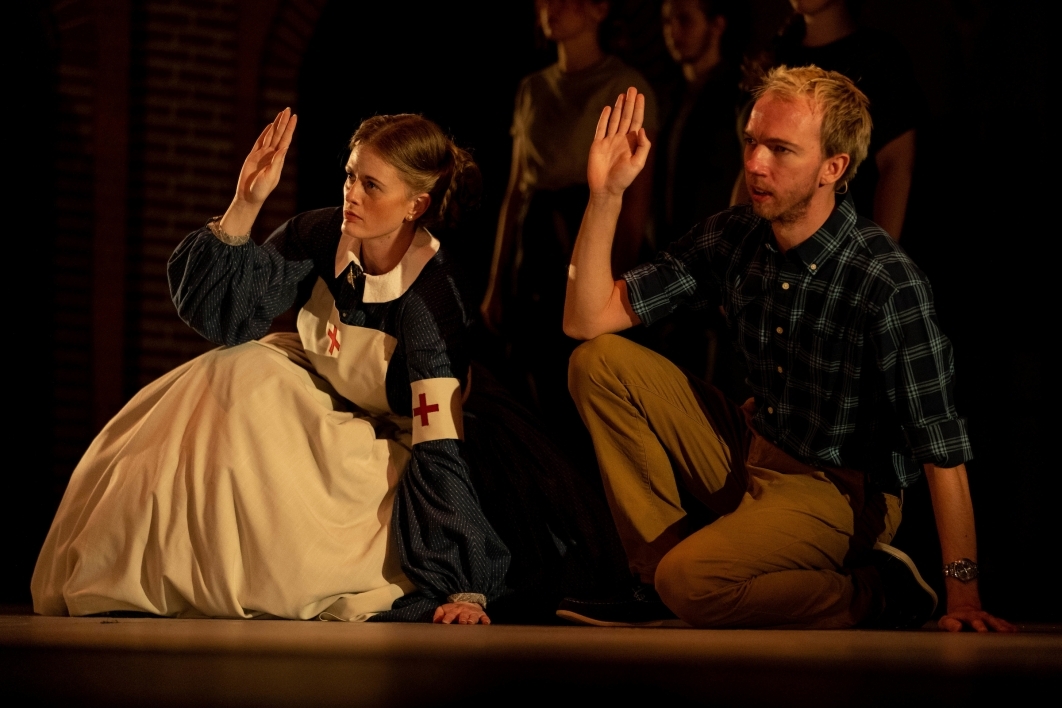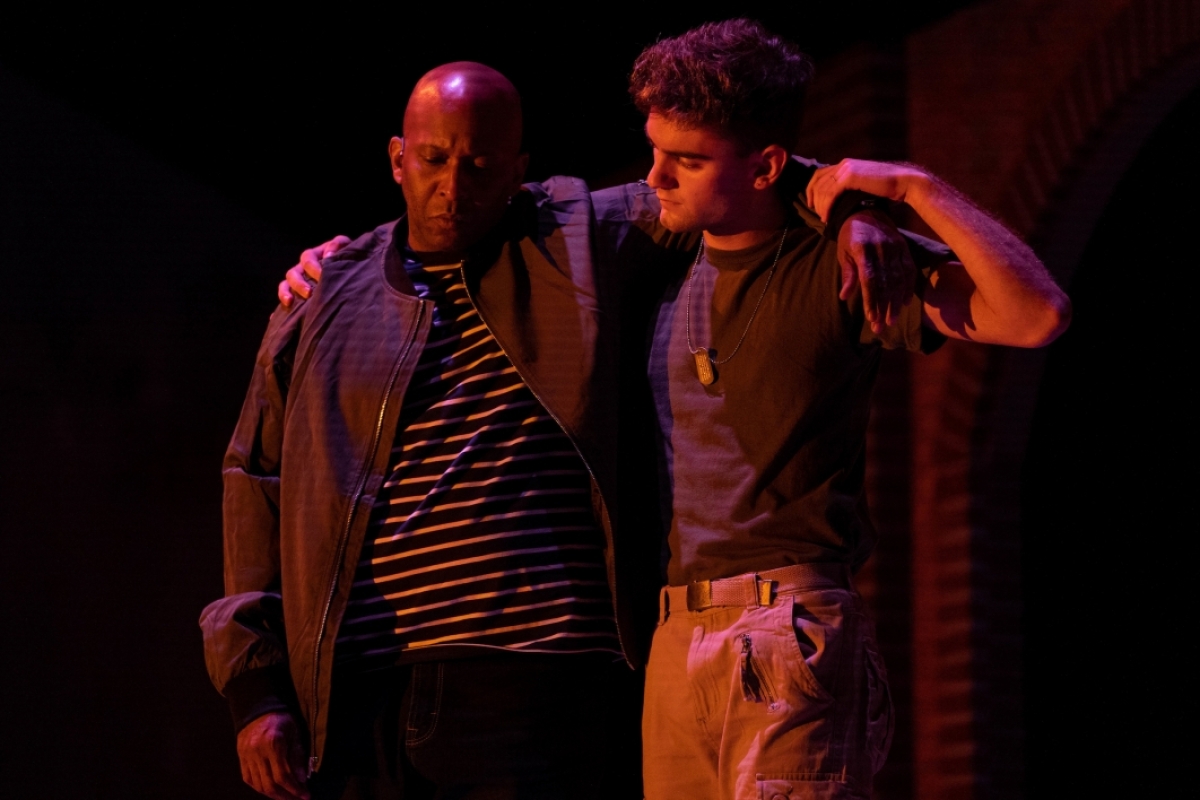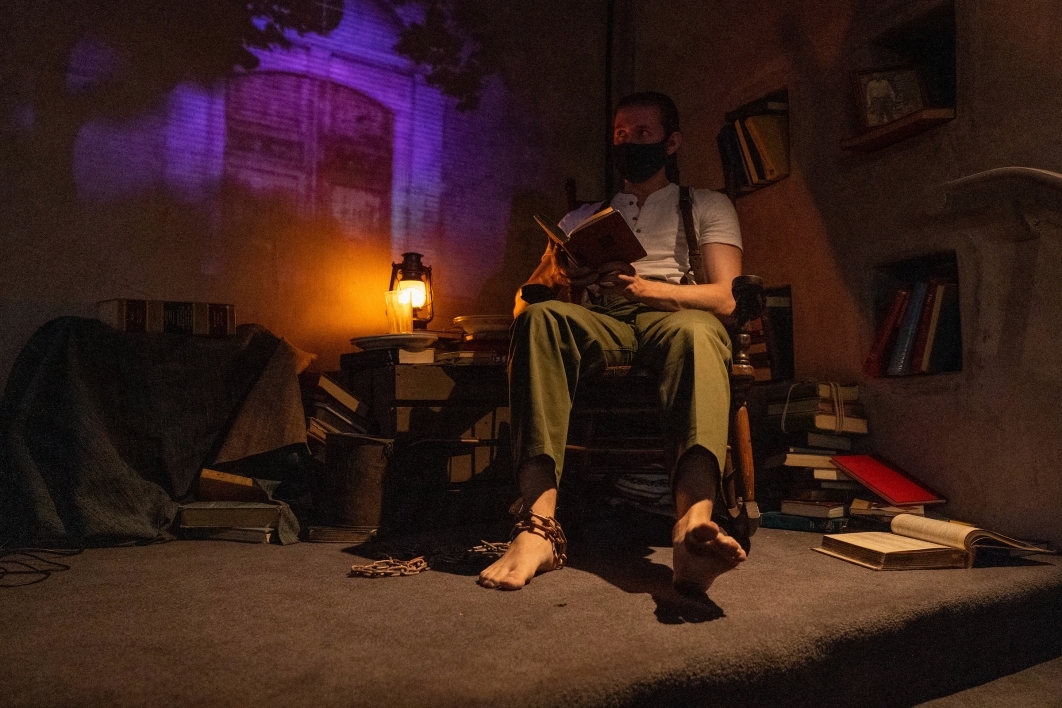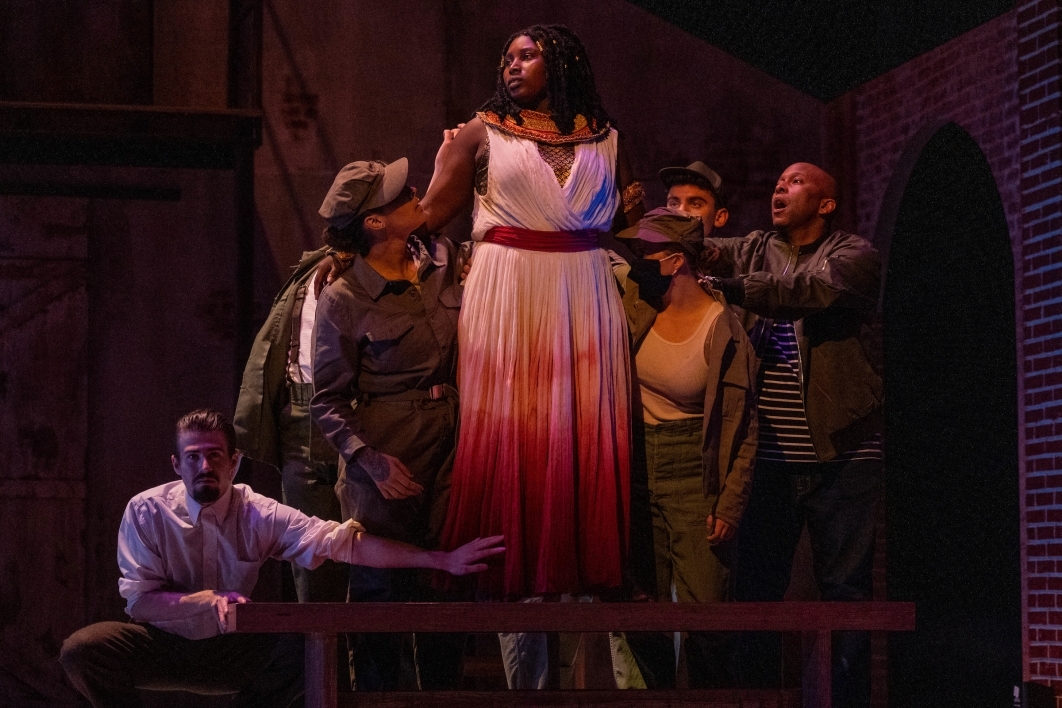Veterans find healing in a variety of ways and places.
It could be camping in the woods. Playing with dogs. Working with pottery. Now they can add the theater to the list of options.
Arizona State University's School of Music, Dance and TheatreThe ASU School of Music, Dance and Theatre is part of the Herberger Institute for Design and the Arts. will host a series of performances of Liz Lerman’s “Healing Wars” for Salute to Service starting on Nov. 5 at the Galvin Playhouse Theatre on the ASU Tempe campus.
Lerman, who is a Herberger Institute Professor, choreographer and dancer, said the arts has a dynamic way of tackling and addressing difficult subjects.
“It’s my perception that the military found the normal mechanisms by which they hoped things would work for veterans to be engaged in society had not been working,” said Lerman, whose father served in World War II and suffered from PTSD. “The military discovered that veterans opened up to the arts in a way they had not opened up in the past.”
And that’s one of the reasons Lerman started research on “Healing Wars” about a decade ago, when she was an artist-in-residence at Harvard University. She said the inspiration for the play grew out of a moment while visiting Ford’s Theatre in Washington, D.C. It made her wonder about the women during the Civil War, including her personal hero, Clara Barton, founder of the Red Cross. She said it’s one of the most spiritual and emotional plays she has ever written.
“I wrote about the pain of the soldiers, including the pain of the people trying to support them such as doctors and nurses,” Lerman said. “When you’re marred by something like war, you never get over it. Your task is to learn to find a way to live with it.”
Billed as multimedia experience that fuses music, dance, theater and performance art, “Healing Wars” addresses various issues related to war, medicine and the ways people’s minds respond to traumatic events. It also toggles back and forth between historical accounts of the Civil War and tales of soldiers lost and maimed on battlefields today.
“Healing Wars” opened in 2014 in Washington, D.C., to commemorate the 150th anniversary of the Civil War. Actor Bill Pullman and his wife, Tamara Hurwitz Pullman, were cast in the starring roles, and the production toured across the country.
It has now been revitalized and repurposed for Salute to Service with Keith Thompson at the helm. Thompson, an associate professor and assistant director of dance in ASU’s School of Music, Dance and Theatre, was also a dancer and choreographer in the first phase of the work. He is more than familiar with the material, and he’s putting his own stamp on it.
“It’s a whole new set design, whole new costuming, whole new lighting, whole new media design,” Thompson said. “I’ve incorporated some of the threads from the original, but I’ve also created a lot of new things.”
Thompson has also expanded the original number of roles from eight to 18 to make it “an educational experience” for students. Many will be mentored by faculty such as Marissa Barnathan, a first-year MFA student at ASU.
“It is a play but has elements of music, dance and theater,” said Barnathan, who has worked in the Philadelphia theater industry for almost a decade and will assist Thompson to oversee a cast and crew of around 50 people. “It uses all of these art forms to elevate and make visible the struggle of veterans.”
It’s also elevating the cast, according to Honestine Mbuyenge, a performance and movement major in the School of Music, Dance and Theatre.
“The use of movement takes you to a place … it offers more emotion,” said Mbuyenge, who is cast as “Spirit” in the play. “This is an ensemble-based show, and I feel even more connected to my classmates than any other show I’ve done.”
Thompson is keeping some original pieces of the play intact, including a preamble 30 minutes prior to the show where the audience walks through an immersive experience en route to their seats. Thompson recommends ticket holders arrive 45 minutes early to have the full experience, but audience members may opt out and go directly to their seats.
“Healing Wars” will also continue to use veterans in the cast. This incarnation will feature three, including Aaron Hernandez, Anders Lettie and Kermit Brown, who is cast as “Vet.”
“A colleague referred me and said, ‘Hey, you’d be great for this role,’” said Brown, who is a full-time lecturer in the College of Integrative Sciences and Arts and served seven years in the Marines from 1991–98. “I was reluctant at first, even skeptical, but I’ve been blessed with a lot of energy and enthusiasm. I decided I wanted to try something new. And so here I am.”
Brown instantly related to the material, having joined the Marines right out of high school and served at the tail end of the Gulf War in the '90s.
“This play has been therapeutic for me. It has forced me to deal with the dark side of being in the military, and death is very prevalent in this play,” said Brown, who portrays a soldier with PTSD. “It has also taught me that art can be therapy.”
It can also be informative. Theater major Matthew Griesgraber said he has had little contact with people who have served in the military.
“It has opened my eyes to the effects of war,” Griesgraber said. “Through the play and the script, it shines a light on what our veterans experience in war time and has given me some perspective.”
For actress Ann Ethington, “Healing Wars” is a way to give back to veterans and bring awareness to some of the issues they struggle with after military conflict.
“Every 21 minutes a veteran commits suicide, so every time that’s mentioned in the news or on social media, I’ll drop and do 21 pushups,” Ethington said. “We can bring healing to veterans by showing them they’re not alone in this and that we can get a message out to the public that this what they’re struggling with. Having that recognition and representation in our play can help heal them.”
Lerman’s “Healing Wars,” directed and adapted by Thompson, opens Nov. 5 and runs through Nov. 14. Tickets must be purchased in advance through the Herberger Institute Box Office. Because the production focuses on death and war, audiences should be warned that there are loud sounds and explosions as well as depictions of violence and trauma. Audiences can learn more about the production here.
Written by Marshall Terrill and Lacy Chaffee.
Top photo: Fourth-year theater major Ann Ethington (right) and second-year theater major Matt Griesgrabar perform a rehearsal of “Healing Wars” at the Galvin Playhouse in Tempe on Nov. 3. Photo by Samantha Chow/ASU News
More Arts, humanities and education

ASU professor's project helps students learn complex topics
One of Arizona State University’s top professors is using her signature research project to improve how college students learn science, technology, engineering, math and medicine.Micki Chi, who is a…

Award-winning playwright shares her scriptwriting process with ASU students
Actions speak louder than words. That’s why award-winning playwright Y York is workshopping her latest play, "Becoming Awesome," with actors at Arizona State University this week. “I want…

Exceeding great expectations in downtown Mesa
Anyone visiting downtown Mesa over the past couple of years has a lot to rave about: The bevy of restaurants, unique local shops, entertainment venues and inviting spaces that beg for attention from…


